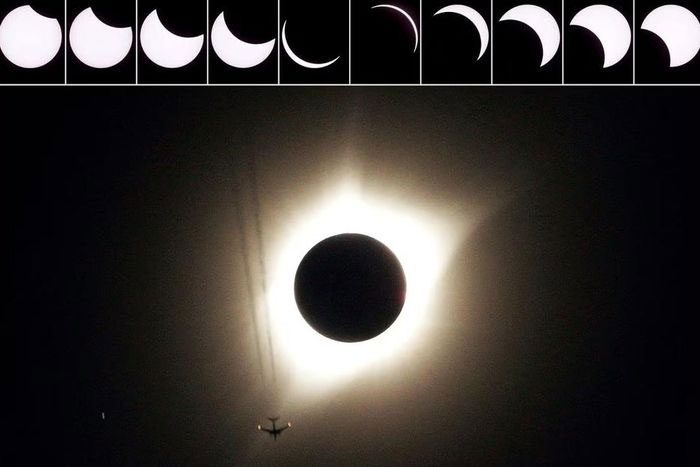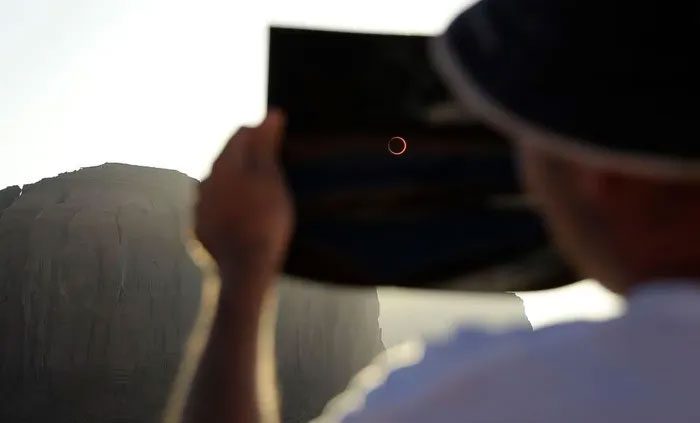Millions of people across the Americas will have the opportunity to witness an exciting astronomical event on October 14th, which is an annular solar eclipse (when the Moon is seen covering the Sun).
The eclipse will be visible along a path covering areas of the United States, Mexico, and several countries in Central and South America.
What is an Annular Solar Eclipse?

The annular solar eclipse on October 14 will be best viewed in certain states in the U.S. starting at 9:13 AM PDT. (Photo: CNN).
An eclipse occurs when the Moon moves between the Earth and the Sun, blocking the view of some or all of the Sun’s surface along a narrow path on Earth. The event on October 14 is categorized as an “annular solar eclipse”. This happens when the Moon passes between the Earth and the Sun at a point when the Moon is at or near its farthest distance from our planet. It does not completely obscure the Sun’s surface, unlike a total solar eclipse.
Because the Moon is farther from Earth than usual during an annular eclipse, it will not completely cover the Sun. Instead, it will appear as a dark disk placed on top of the larger, brighter disk of the Sun in the sky. As a result, the eclipse will briefly look like a ring of fire surrounding the dark disk of the Moon. A total solar eclipse will occur on April 8, 2024, passing through Mexico, the United States, and Canada.
According to the U.S. space agency NASA, the annular eclipse on October 14 will be best viewed in parts of several U.S. states starting at 9:13 AM PDT (4:13 PM GMT) in Oregon, followed by California, Nevada, Utah, Arizona, New Mexico, and Texas. The path will then extend through regions of Mexico, Guatemala, Belize, Honduras, Nicaragua, Panama, Colombia, and Brazil, ending at sunset over the Atlantic Ocean. People in larger areas of North America, Central America, and South America will see the Sun obscured less, but it will still be an impressive sight.
How to Safely View the Eclipse
The Moon will nearly cover the Sun when viewed from Earth, but in reality, the Moon is much smaller than the Sun, yet it is much closer to our planet. The diameter of the Moon is 3,476 km, compared to the Sun’s diameter of about 1.4 million km and the Earth’s diameter of 12,742 km.

It is unsafe to look directly at the bright Sun without using eye protection. (Photo: CNN).
Experts warn that it is not safe to look directly at the bright Sun without using specialized eye protection designed for solar viewing. Since the Sun is never completely obscured by the Moon during an annular eclipse, looking directly at it without eye protection will be unsafe.
Viewing an annular solar eclipse through a camera lens, binoculars, or a telescope without using a specialized solar filter can also cause serious eye damage. We should use safe solar viewing glasses or handheld solar viewing devices during the annular eclipse, noting that regular sunglasses are not safe for viewing the annular eclipse.
To learn more about this and other fascinating phenomena, scientists explain that a lunar eclipse occurs when the Earth is positioned between the Moon and the Sun, casting the shadow of our planet on the Moon’s surface. This causes the Moon to appear dim when viewed from Earth, sometimes taking on a slightly reddish hue. Lunar eclipses can be seen from half of the Earth, covering a much larger area than solar eclipses.





















































